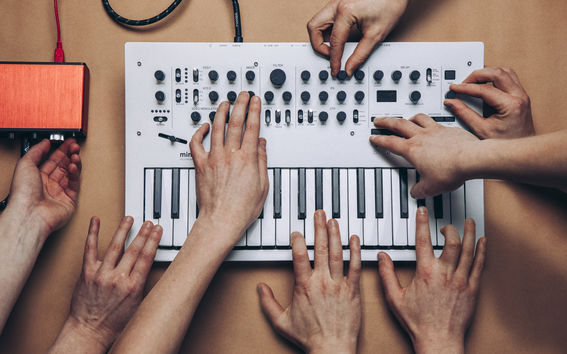Mixing art and artificial intelligence

Artificial intelligence (AI) seems to be everywhere these days. Recent news says it warns swimmers for sharks, reads minds and can even track students emotions and concentration levels. AI enables the creation of deepfakes, videos of real people seemingly doing things they never did; it can show and amplify the unjust, racial, chauvinist and other biases inherent in our culture and society. At the same time, it’s enabling discoveries that humans simply don’t have the computing power to do themselves.
Tomi Dufva -- an Aalto University lecturer specialised in emerging practices in art education -- has thought a lot about what AI means for the world. Machine learning holds a lot of promise, yet questions remain on how it will affect our understanding of art and culture. An artist himself, he loves to think about intersections between art, technology and science.
Here’s what Dufva has to say about how these two distinct worlds can, and should, come together.
How has AI affected the world of art?
Earlier this fall media-sites reported the first ‘AI-generated’ artwork was sold at Christie’s auction house for a hefty €425 000 price tag. The artwork, a portrait of Edmond de Bellamy in 16th-century style, was actually created by Parisian art group Obvious, and their use of machine learning algorithms. The news fuelled an extensive discussion on the future of art. Some even concluded that we don’t need artists anymore.
But does AI mean the end of human made art? Or could AI provide a whole new dimension to art? Artists are quick to experiment, use and misuse new technologies. The same holds true for AI.
How can we use AI when we make art?
AI can be a material and tool for art making. Besides creating portrait paintings, AI produces a lot of images. Most of these images are nothing like portraits, but for instance, weird, faint and distorted human forms with multiple hands or mouths. Just as we use brushes and paints to create paintings, we can use AI as a tool to express, relate, communicate something dear to us.
Can AI make art on its own?
No, and yes; AI can create original images on its own, but they are not, at least yet, art. Even though artists have created autonomous art-making machines--like Harold Cohens Aaron, a painting machine Cohen started developing in the late 1960s--few actually are considered to be artists. They are more like extensions of the artists themselves. Cohen, who passed away in 2016, has jokingly remarked that he might be the first artist to have exhibitions of new works even after his death. So, it seems that artists do not, at least yet, believe that AI could make artautonomously.
Can AI work as inspiration or guide in our post-digital age?
Some artists are actually trying to create their own AI muse. This could mean artistic practices like when AI learns an artist's style or thoughts and shows them the paths to go forward. Or the artist can create a machine that mimics their own style and make art together with the AI.
But not all artists working with AI will actually use AI. An artist can create machines that are seemingly clever but are based on simple programming. Or machines can fail miserably and create humor and commentary on our contemporary life, like we’ve seen in Simone Giertz’s shitty robots.
So the art world can gain from AI. How can AI benefit from art?
Art can make things visible. It can show what our lives with AI looks like, and bring forth things that could otherwise be invisible. I think art has an essential role in thinking about and discussing our possible futures with AI.
Read more news

Seizing opportunities
Vuong Vo's path led through Aalto University and VTT to a startup, where he is helping build the protein factory of the future.Growing Materials, Growing Ideas: Inside the BioMaker Studio
At Aalto University’s BioMaker Studio, initiated by Ena Naito, students and researchers experiment with living materials, from algae to mycelium, creating an open, interdisciplinary space where design, biology, and collaboration grow together.
The year in Review: What happened in 2025?
A recap of the milestones of the Master in Contemporary Design in 2025






